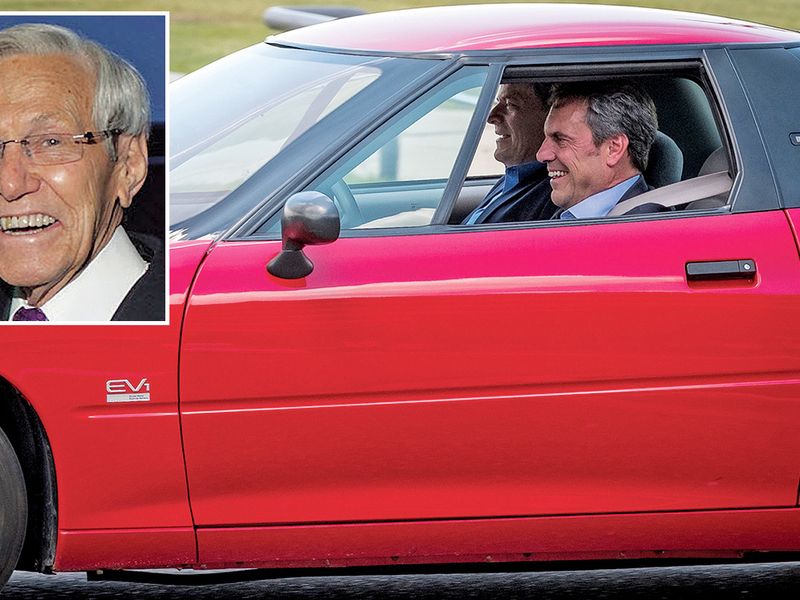
Editor’s note: It’s been 25 years since the GM EV1 rolled into showrooms and launched the electric vehicle in the modern era. This article is part of a special report Automotive News will publish on Monday.
As president of General Motors from 1990 to 1992, Lloyd Reuss was an early champion of the Impact, the concept car that became the EV1. Among other things, Reuss, now 84, helped put in place the engineering team that created the Impact.
Thirty years later, Reuss’ son, Mark, 57, is now GM president, and he’s leading the automaker’s efforts to meet an aggressive goal: to transform its entire light-duty lineup to electric vehicles by 2035.
Mark and Lloyd discussed the legacy of the Impact and the EV1 for Automotive News. Here are edited excerpts of their conversation.
On the creation of the Impact:
Mark: A lot of people thought GM only did the Impact to show how we could meet California’s strict ZEV standards, not to encourage our own technological advancements and capabilities in all-electric vehicles.
Lloyd: It was meant to do both, really. And to show the world that we could actually do something like that. But when I was able to introduce the Impact, it was a big, special moment and one of the highlights of my career, really. Because we knew it was a big change with big implications.
On taking the EV1 to production:
Mark: Following up Impact with the production EV1 was huge because at that time, a lot of companies showed concept cars that were never built. And this one was far beyond what people actually thought we would do.
Lloyd: It had to be the real thing. Sure, it was a major step in a new direction, but we thought we were ready, and we went ahead and proved it.
Mark: I remember when you brought one home and used it as a daily driver.
Lloyd: Oh, yeah, we took it and drove it like a family car because that’s what it had to be.
It had to have everything customers required — air conditioning, power steering and all the things a so-called real car would have.
That was very important.
On driving the EV1:
Mark: It must have been a challenge to build because it did have to have all those customer requirements like air conditioning and power steering, but when you drove it, and it had all those things, it could do everything conventional cars could do, except it did it in near-total silence.
Lloyd: Yes, in fact, we were concerned about that. There was almost no audio feedback, or minimal at best. And we didn’t know how people would feel about that.
Mark: Fans of the car loved it, as it turned out.
Lloyd: They did.
But then, fans of the car loved nearly everything about it.
On the end of EV1 production:
Mark: It was tough at the end to learn that its run was over and most of the cars would be destroyed or donated to engineering schools.
Lloyd: It was. But we felt that it was important, given the amount of time and the amount of money we spent on the program, that it would continue to have the most impact on society that it possibly could. That was the thinking behind the donations to schools.
On the EV1’s legacy:
Lloyd: Well, it was the first. And first is first, and second is nobody.
Mark: It was first, and it laid the groundwork for much of what we have for EVs in high volume today. It was way ahead of its time, in so many ways. From its extensive use of adhesives in the body structure to its ultralow rolling resistance tires to its inductive charging. Plus, with that shape and its wheel skirts, it was one of the most aerodynamically efficient vehicles ever.
Lloyd: People still ask the question: Should we have done it? And the answer is: Certainly.
Mark: There’s a lot of energy in the company about it even today. We had quite a few people stay from that team because they knew this was all going to happen, eventually. I just signed a retirement photo of the whole original EV1 team for a guy who was on the team and now works on Ultium in our battery lab.
Lloyd: That’s wonderful. It was a great team. And they built a car that far exceeded expectations, especially when people actually drove the car.
Mark: Oh, yeah — it exceeded expectations by far. A couple of years ago, we fully restored the first one, which we’d kept, and I got to drive it. It’s still very relevant after a quarter century. That’s how far ahead of its time it was.